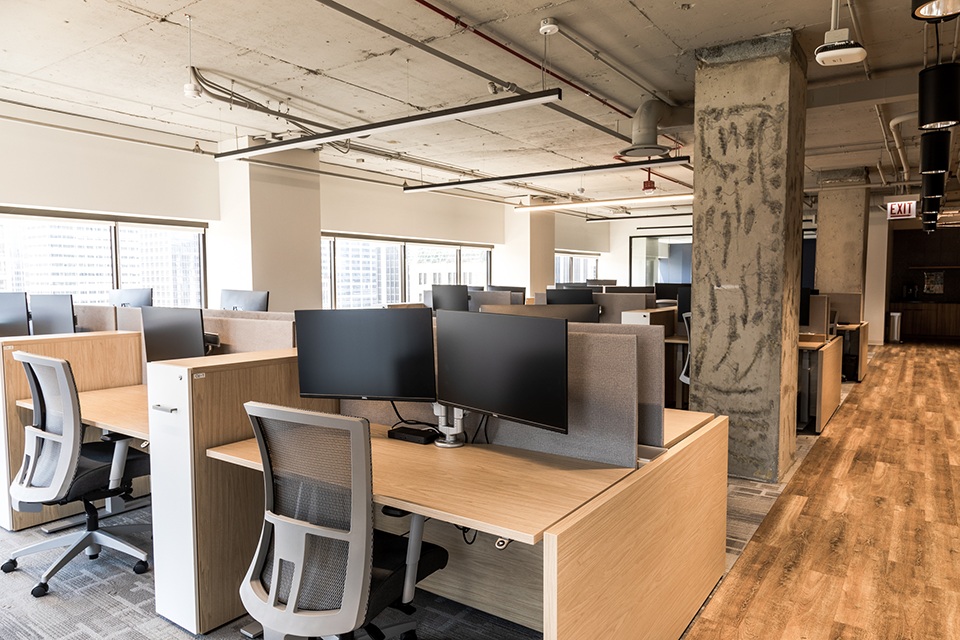Stay-at-home orders and other confining measures began in March and are still in effect in some form, essentially forcing American offices to operate in a skeletal format or a state of abandonment.
Leaving critics to wonder: is there any value in the traditional office?
The Seeming Extinction of the Office
Similarly to the TV show The Office, the modern office is seemingly coming to an end. Instead, this time it’s not ending because a key cast member is leaving. Rather the office is being ravaged by a pandemic and social distancing restrictions that are ongoing.
However, the extinction of the office isn’t a 2020 philosophy. It dates back to 2013, and possibly even before then.
What proponents of this “dying office” philosophy believe is that all this technology makes the office a relic and redundant in the age of technology.
Yet, it’s this same technology that has allowed companies to keep their workforce employed while continuing their operations. Because technology is a vital component of the modern office, but it’s not the only component.
Those who believe the office’s death is only being exacerbated by COVID-19 – and that it would have been an inevitable fate for this type of work environment – feel that employees have more freedom, creativity, and personal responsibility when they’re able to work remotely.
They also argue that employees – and employers – will save immensely, establishing a leaner company.
The notion is: cut out the office and you save on overhead. Besides, you’ll have happier, healthier, and more fulfilled employees, all while increasing creativity, productivity, and overall morale in the workplace.
The Traditional Office Is Here To Stay
Some refuse to consider that the office will change. They assume that the office – in its current format – is set in stone. They maintain that only less-informed companies would give up their offices, allowing their employees to work remotely. They assert that employees are eager to come back to work, they’re eager to have some normalcy restored. These claims are valid, however, you need to consider the greater context.
Employees may be itching to return to work because work is the only regular thing in their life at the moment. Work is their only source of stability, and in some instances, human interaction.
Perhaps COVID-19 and social distancing regulations are amplifying their desire to leave the house for something other than the weekly grocery run, and perhaps this could be what’s driving their need to return to the office?
But those in favor of the traditional office cite studies that confirm that employees are more productive, more accountable, and more creative when they’re in an office.
So who’s right?
It’s a bit of both.
The workspace post-pandemic will be about finding a balance between the traditional office and the flexibility of remote work.
Finding Balance
What this pandemic is teaching us is that an office isn’t the only solution to increasing productivity. Employees can be as productive when working remotely as they are within an office. But productivity shouldn’t be the yardstick for determining the effectiveness of an office, nor should potential cost-saving be the only reason you let go of the office. The benefits or drawbacks of an office aren’t limited to financial or physical output.
Creativity, competition, knowledge-sharing: these are all diminished when you’re working from home, and are difficult to quantify.
Communication, something else that is essential for successful collaboration, is more straightforward face-to-face.
Employees aren’t being distracted by spaceship backgrounds on Zoom or trying to decipher the tone of an email before responding. Yes, these are conundrums you can face at the office, but they’re far more common when you’re working from home.
Instead of eradicating the office or leaving it as is; going forward the best solution is to find a way to adapt to the issues the pandemic has shown can impair the modern office.
Adapting To New Normals
The modern office is going to change post-pandemic.
This entails developing innovative ideas of what this new workspace will look like and how it will function.
How will an office incorporate social distancing while fostering creativity, knowledge-sharing, and healthy competition? What if workers prefer working remotely to working at the office?
The answer to these questions isn’t in banishing the office altogether. Instead, the answer is to reinvent the office space with these new normals in mind.
Just as an open-plan office concept took center stage as collaboration and creativity were encouraged, this is an opportunity to adapt to ensure these “challenges” don’t cripple the American office but help shape a new and more sustainable office.
In conclusion, there’s still value in the office.
Download our Return to Work Playbook here.

